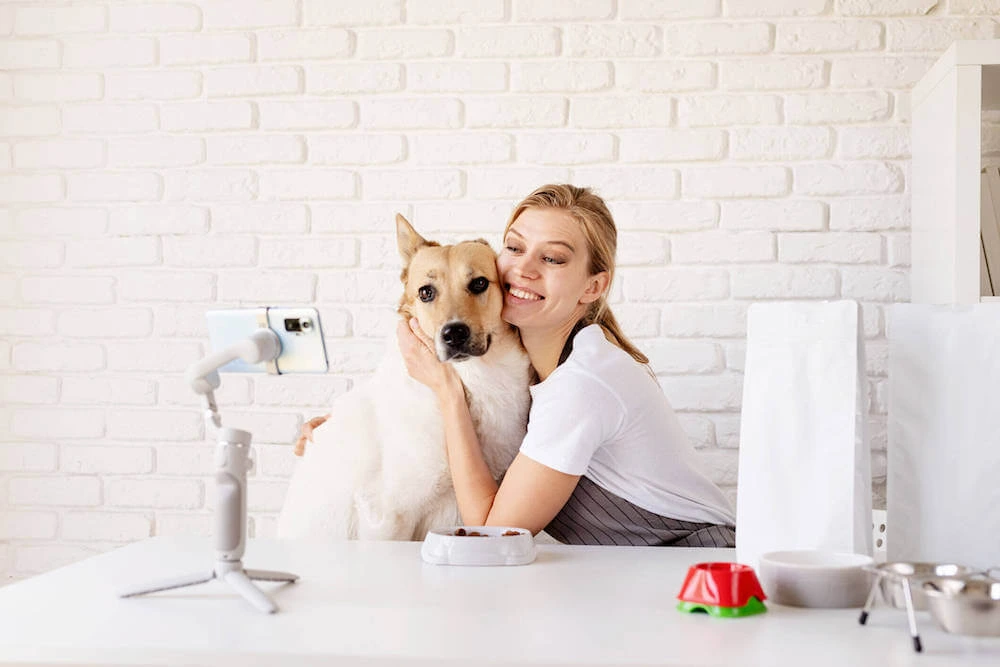
The pet industry is booming, with pet owners increasingly turning to digital channels to discover, evaluate, and purchase products for their beloved animals. Pet brands like Roam Pets, which specialize in quality, sustainable pet products, have a unique opportunity to leverage digital marketing to engage with eco-conscious pet owners. This guide outlines the essential strategies pet brands can use to grow their online presence and stand out in a competitive marketplace.
Introduction to Digital Marketing for Pet Brands
With the global pet care market continuing to expand, digital marketing has become crucial for pet brands that want to thrive online. Pet brands such as Roam Pets, which focus on sustainable and health-conscious pet products, are well-positioned to attract today’s eco-aware pet owners. This article will provide a roadmap for pet brands to build their digital marketing strategy, from understanding their audience to engaging with them across social channels and leveraging analytics to measure success.
Understanding the Target Audience in the Pet Industry
A deep understanding of the pet industry’s target audience is essential for crafting effective marketing messages. Here’s a breakdown of the key characteristics:
- Demographics: The primary audience for pet brands includes millennials, a significant portion of whom treat their pets as family members.
- Psychographics: Pet owners are often motivated by pet health, sustainability, and quality, making these ideal focal points for marketing messages.
- Behavioral Insights: Many pet owners prefer online shopping for convenience and regularly seek advice on pet care, making content marketing an excellent strategy.
Understanding these elements enables pet brands to create content that resonates with pet owners, building trust and fostering long-term customer relationships.
Establishing Brand Identity and Online Presence
Creating a unique, relatable brand identity is essential for pet brands. For companies like Roam Pets, brand values such as sustainability and quality can set them apart from competitors.
Building an Optimized Website
- User Experience (UX): A pet brand’s website should be easy to navigate, mobile-friendly, and visually appealing.
- SEO Optimization: Implement SEO strategies to improve visibility. Use keywords like “sustainable pet products” or “eco-friendly pet care” in product descriptions, blog posts, and meta tags.
- E-commerce Essentials: Ensure that product pages are comprehensive, with high-quality images, detailed descriptions, and a smooth checkout process.
Social Media Marketing for Pet Brands
Social media is a powerful tool for pet brands, especially on platforms like Instagram, TikTok, and Facebook, where pet-related content thrives. Here’s how pet brands can utilize social media effectively:
Key Social Media Strategies
- Engaging Content: Share pet care tips, showcase products in use, and post user-generated content (e.g., customers’ pets enjoying your products).
- Influencer Collaborations: Partnering with pet influencers or micro-influencers helps reach niche audiences.
- Consistency in Posting: Establish a content calendar to post regularly, balancing educational, entertaining, and promotional content.
Case Studies
Highlighting successful social media campaigns from brands similar to Roam Pets can serve as inspiration and offer insights into what resonates with audiences.
Content Marketing: Providing Value to Pet Owners
Content marketing allows pet brands to educate their audience, establish credibility, and improve SEO rankings. The goal is to provide helpful and engaging information that attracts and retains potential customers.
Content Ideas for Pet Brands
- Blog Posts: Topics like “Best Eco-Friendly Pet Products,” “Pet Care Tips for Beginners,” and “Sustainable Pet Supplies” align with Roam Pets’ values and target audience.
- Video Content: Create videos demonstrating product usage, pet care tutorials, or customer testimonials.
- SEO Optimization: Use keywords that match the audience’s search intent, improving organic traffic and engagement.
For more interesting blogs, visit our site: https://futuretrendz.co.uk/
Influencer Partnerships and Pet Ambassadors

Influencer marketing is an effective way for pet brands to boost credibility and reach a wider audience through pet influencers, who often have a loyal following.
Selecting the Right Influencers
- Brand Alignment: Choose influencers who align with the brand’s values, such as those focused on sustainability or pet health.
- Engagement Rates: Analyze potential influencers’ engagement rates to ensure they have an active, engaged audience.
- Campaign Monitoring: Track each influencer campaign’s performance to refine future efforts.
Email Marketing and Community Building
Email marketing allows pet brands to engage directly with customers, offer exclusive deals, and build a community. For pet brands, a strong email marketing strategy can foster brand loyalty and encourage repeat purchases.
Building an Effective Email Strategy
- Segmentation: Segment email lists based on customer preferences or past purchase behavior for more targeted campaigns.
- Content Ideas: Newsletters with tips, discounts, or product recommendations can keep customers engaged.
- Feedback Collection: Use email surveys to gather customer feedback, helping improve products and services.
Paid Advertising and Retargeting
Paid advertising is a powerful way to reach pet owners on platforms like Google, Facebook, and Instagram. For pet brands, retargeting can also be a valuable strategy to re-engage customers who have shown interest in the brand.
Key Advertising Strategies
- Audience Targeting: Use insights from customer data to create ads that appeal to pet owners’ specific interests.
- Budgeting and Optimization: Set a clear budget, and monitor ad performance to maximize ROI.
- Retargeting Tactics: Use retargeting ads to remind past visitors of products, especially high-interest items they may have viewed previously.
Analytics and Metrics for Success
Analyzing the results of marketing efforts is critical for understanding what works and where improvements can be made.
Important KPIs to Track
- Engagement Rate: Indicates how well content resonates with the audience.
- Conversion Rate: Shows how effective the website is at turning visitors into customers.
- Customer Retention Rate: Reflects the brand’s ability to keep customers coming back.
Using tools like Google Analytics, Facebook Insights, and email marketing platforms, pet brands can continuously refine their strategies based on data-driven insights.
Case Studies: Success Stories in Roam Pets Digital Marketing

Examining successful campaigns by other pet brands can offer valuable lessons and inspiration. Here are a few examples:
- Successful Content Marketing Campaigns: Brands that have used educational content to build trust and drive traffic.
- Influencer Success Stories: Examples of pet influencers who have helped elevate brands.
- High-Performing Social Media Campaigns: Campaigns that leveraged trends or customer stories to generate high engagement.
For more interesting blogs, visit our site: https://futuretrendz.co.uk/
FAQs About Roam Pets Digital Marketing
- How can pet brands benefit from digital marketing?
Digital marketing allows pet brands to connect with a wider audience, build brand awareness, and foster customer loyalty. - What social media platforms are best for pet brands?
Instagram, TikTok, and Facebook are popular platforms for pet brands due to their visual and engaging nature. - How important is content marketing for pet brands?
Content marketing is crucial as it provides valuable information, engages customers, and helps improve SEO rankings. - What should pet brands focus on in influencer marketing?
Focus on finding influencers who align with the brand’s values and have an engaged, loyal audience. - What are key metrics for measuring digital marketing success in the pet industry?
Important metrics include engagement rate, conversion rate, and customer retention rate.
Conclusion and Future Trends in Pet Brand Marketing
As pet ownership continues to rise, the digital marketing landscape for pet brands is expected to evolve rapidly. Pet brands must stay adaptable, leveraging emerging technologies and trends to remain relevant. By focusing on a targeted, data-driven approach, pet brands like Roam Pets can build lasting relationships with their customers and establish themselves as trusted leaders in the industry.
Discover More: Choosing the Best Dog Crate Pads for Your Pet’s Comfort







